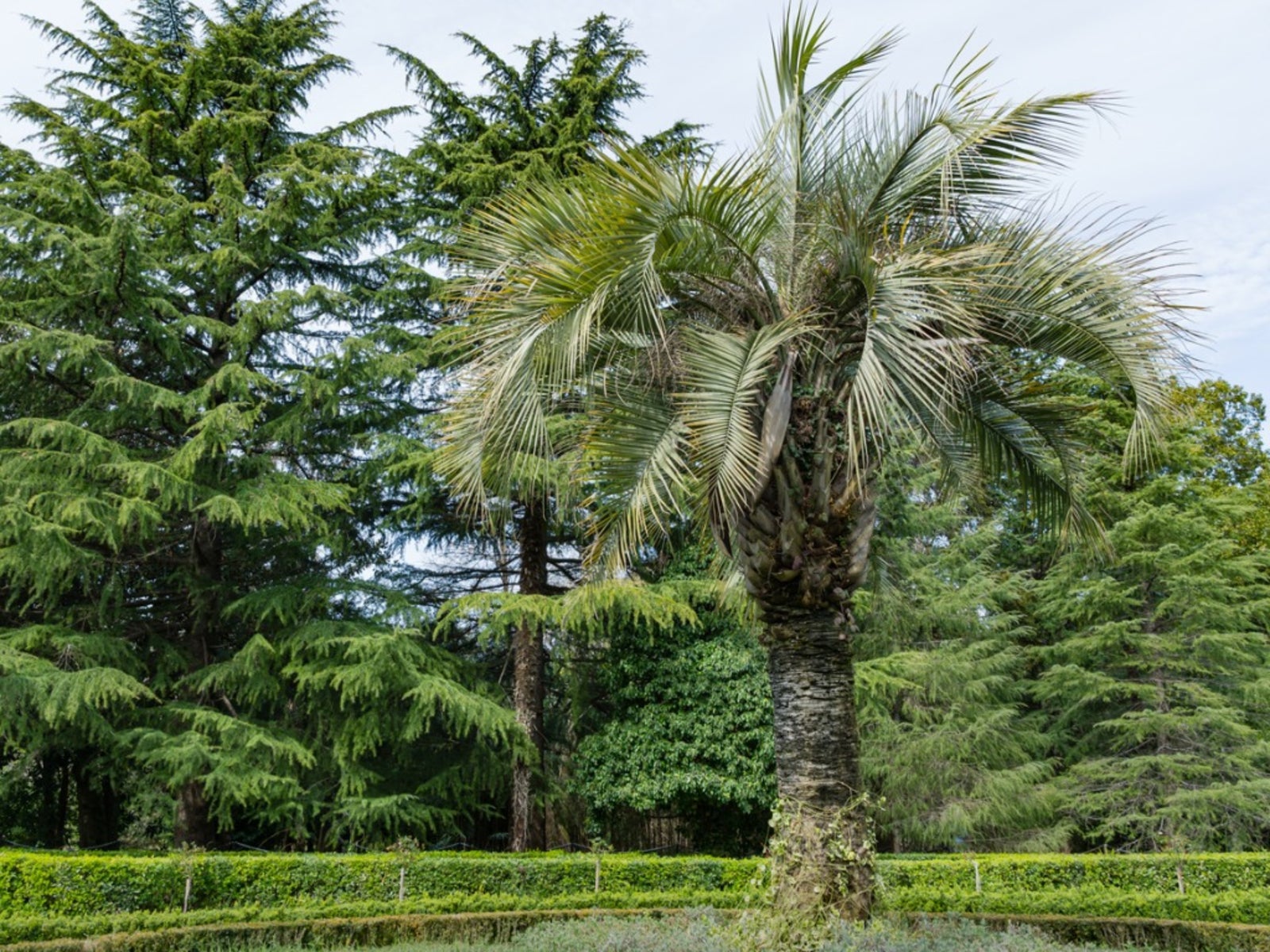Pindo Palm Care: Tips For Growing Pindo Palm Trees

When you think of Florida, you immediately think of palm trees. However, not all palm species do well in colder regions of the state where temperatures may dip down to 5 degrees F. (-15 C.). Pindo palm trees (Butia capitata) are one type of palm that will tolerate cooler temperatures and can even be found along the east coast up to the Carolinas. Let's find out how to care for a pindo palm.
Hardy Pindo Info
Pindo palms, also known as jelly palms, grow slowly to a mature height of 15 to 20 feet (4.5-6 m.) with a trunk diameter of 1 to 1.5 feet (31-46 cm.). Flowers can be red, white, or yellow and occur in groups of two male flowers and one female flower. The fruit of this graceful palm is light orange to brownish red and can be used to make jelly. The seeds can even be roasted for a coffee substitute. Pindo palms are often used as a specimen tree and draw a variety of wildlife with their sweet fruit.
Growing Pindo Palm Trees
Pindo palms will grow in full sun or partial shade and any type of soil as long as it is moderately salt tolerant and has good drainage. Falling fruit can make a mess, so it is recommended that pindo palms be planted at least 10 feet (3 m.) from decks, patios, or paved surfaces. Since these trees grow so slowly, it is best to buy at least a three year old nursery stock tree unless you are extremely patient.
How to Care of a Pindo Palm
Pindo palm care is not difficult at all. There are no diseases or insect problems with this tree, other than the odd micro-nutrient deficiency. Regular fertilization will help keep the pindo palm looking its best. Pindo palms are able to survive hot and windy conditions, but it is always best to keep the soil adequately moist. This Brazil native requires some pruning of dead fronds to keep its appearance tidy.
Sign up for the Gardening Know How newsletter today and receive a free copy of our e-book "How to Grow Delicious Tomatoes".